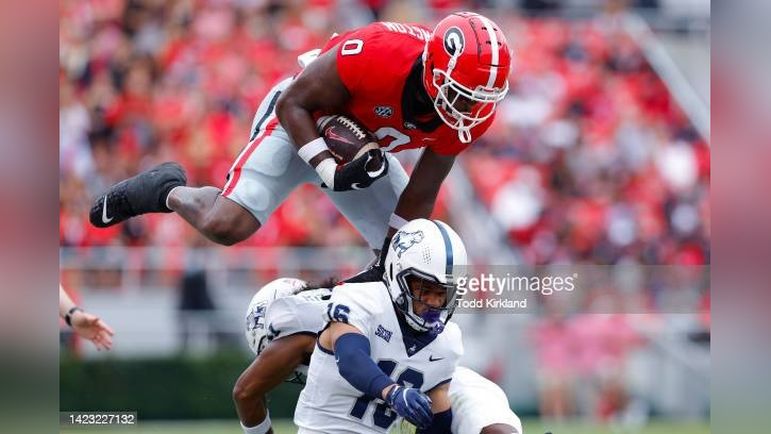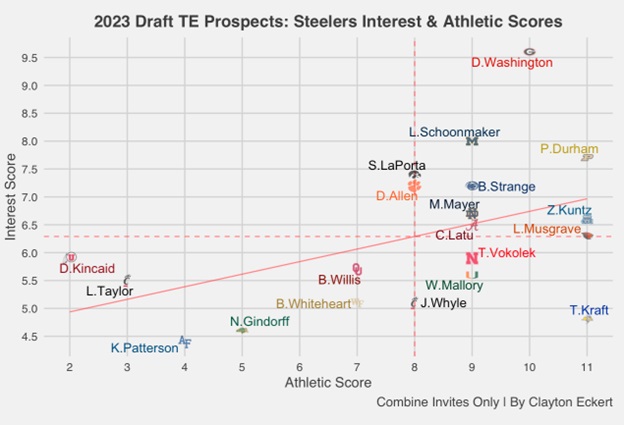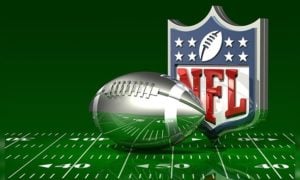For a few of years now, I have kept a running spreadsheet during the draft process. The goal for me is to learn about the players, gathering information that I have tweaked along the way as I’m sure I will continue to do in the future. With great questions and conversations with some your responses to previous articles, people have seemed interested in this information I’ve referenced, so today I will share visualizations of the data points I create each year, simply called interest and athletic scores with explanations to follow.
As Dave Bryan and Alex Kozora discuss regularly, the Steelers have a type of player they look for, and what the scores attempt to achieve is seeing who checks many of those boxes, or vice versa. You will notice many of the inspirations for these scores come from Dave and Alex’s studies of draft trends over the years for Pittsburgh with their in-depth research second to none. That is one of the main reasons I pursued a position and count my blessings to work with the great football minds at Steelers Depot. While there is no perfect way to predict what selections the Steelers will make in the draft next week, I feel great about what the data points measure and, of course, would love to hear feedback as I’m always looking to improve the points system. Also, there is only so much time in the day and additional things I’d like to measure, so I focus on the crucial and/or practical choices in my opinion.
Now for more explanation to how the scores come together. The biggest point I want to make is that this is not a big board or round projection view, rather trying to pinpoint names the Steelers may select regardless of when they are drafted. After I get a healthy pool of names that I hear about or research, I begin the scoring.
Interest Score: Here I configured a points system for the following important questions. How did the players perform in college? Does their height and weight match up to the body type of any player Pittsburgh has drafted at the position the last ten years? What is their experience/age? Do they play a position of need? What was their level of competition? Who attended their pro day? Did they have meeting(s) with the Steelers pre-draft? Did they appear in the Senior, East-West-Shrine, or NFLPA Bowl?
This matches up nicely to the Athletic Score: simply 11 combine metrics excluding wingspan, and whether or not they were within a threshold in each metric of any player drafted at their position by the Steelers since 2013.
Clear as mud? Here are the tight ends that were combine invites:
NOTE: If you don’t see a name please ask, I have many more non-combine players compiled but excluded them for a cleaner chart.
Very telling chart, with Georgia tight end Darnell Washington topping the interest scores by far (9.6), including a recent pre-draft visit, strong Pro Day attendance, and checking all the athletic boxes in the drills he participated in (one DNP in the three cone). He would look great in the Black and Gold. He seems likely to go on the first two days of the draft, which will be fascinating to monitor considering other needs, but would be a perceived and welcomed upgrade.
After a drop-off we have Michigan’s Luke Schoonmaker (eight interest score). He had a highly attended Pro Day, including position coach Alfredo Roberts, with age and lack of pre-draft meetings lower marks, and a nine athletic score (DNP on the bench and 9” hands being smaller than Pittsburgh has selected the last decade). He seems to be a late day-two, early-day three candidate.
Four prospects land in the seven range of interest scores: Purdue’s Payne Durham (7.7), Iowa’s Sam LaPorta (7.4), Penn State’s Brenton Strange (7.2), and Clemson’s Davis Allen (7.2). Strange had strong Pro Day attendance, including the only other Pro Day Roberts scouted, along with an informal Combine meeting. Interestingly each prospect in this range had a pre-draft meeting with Pittsburgh. Durham, who also has a perfect 11 athletic score, seems to be a late day-two/early day-three possibility. The six prospects discussed so far would be the only ones with above average interest scores at most positions.
Another four players land in the six tier: Notre Dame’s Michael Mayer (6.7), Old Dominion’s Zack Kuntz (6.6), Alabama’s Cameron Latu (6.5), and Oregon State’s Luke Musgrave (6.3). Mayer met with the Steelers at the Combine, as did Kuntz informally, with the latter also providing a perfect 11 athletic score, a feat that Musgrave provides as well.
A couple notable names land in the fives with pre-draft ties to Pittsburgh: Cincinnati’s Leonard Taylor (5.5) and Wake Forest’s Blake Whiteheart (5.1). South Dakota State’s Tucker Kraft (4.8) also received pre-draft interest along with a perfect 11 athletic score that seems to be a day-two prospect. Prospects with lower athletic scores in this range solely due to DNPs include Nebraska’s Travis Vokolek (nine) and North Dakota State’s Noah Gindorff (four) fitting from a measurable standpoint.
There was also sparce interest compared to other positions in the non-Combine players overall, with Cade Stover (5.6) having the most attended Pro Day at Ohio State (with their slew of prospects perhaps making this less notable), and just one player having a perfect 11 athletic score: Louisiana’s Johnny Lumpkin. Players in this this group all seem likely to be undrafted possibilities, which I could see as a route Pittsburgh takes with other pressing needs. It seems to be a go big or go home approach, grabbing someone (namely Washington) early in the draft if the board falls right, or adding depth late. It will be interesting to see how it all pans out.
Do you think Pittsburgh will draft one of the players listed above? Who are some of your favorites? Thanks for reading and let me know your thoughts in the comments.









